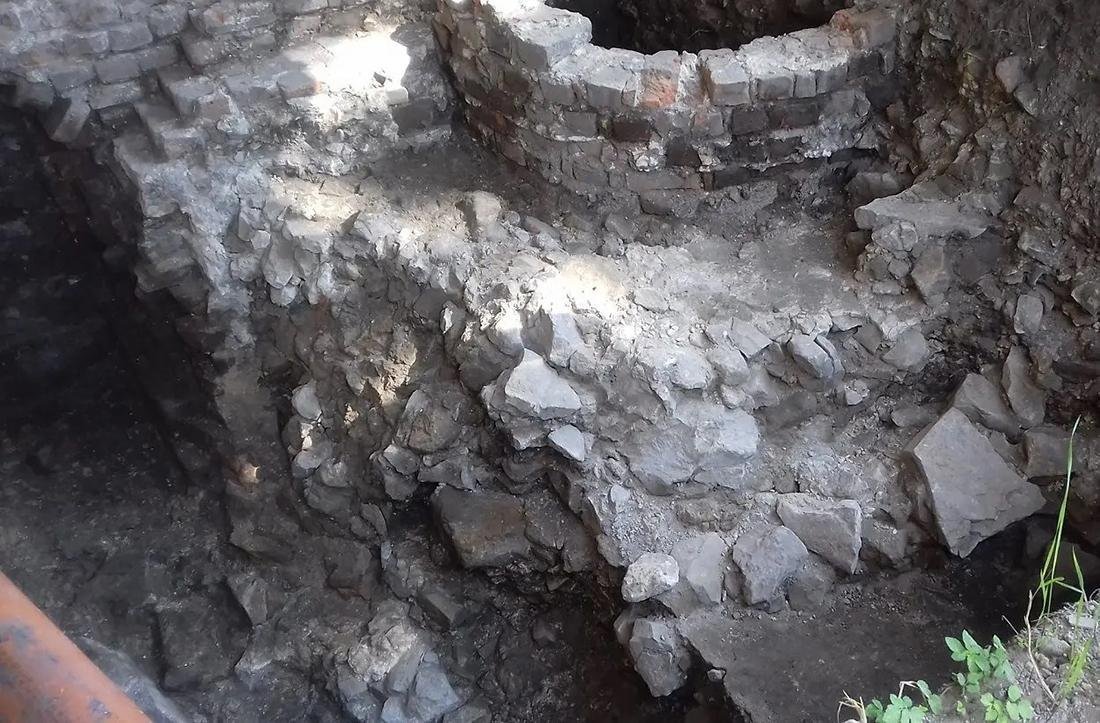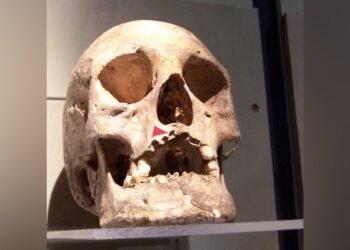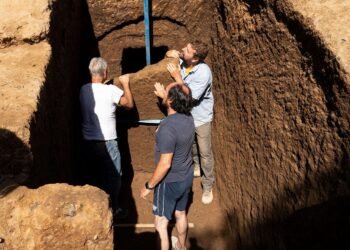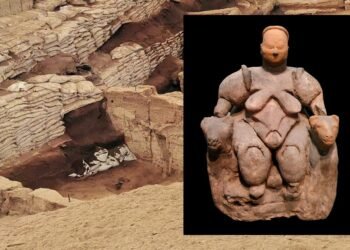Archaeologists have unearthed the remains of a medieval tower in Lublin’s Old Town, Poland. This tower, featured in the famous 17th-century panorama of Lublin, known as the “Theatrum Praecipuarum Totius Mundi Urbium,” was identified on a fragment of the town’s defensive wall at 15 Jezuicka Street.

The conservator of monuments, Dariusz Kopciowski, expressed the importance of this find, stating, “This is a significant discovery.” It had been previously assumed that the tower’s remains were enclosed within the structures of the building, but the excavation revealed that the tower extended outside, behind the rear façade, into the courtyard.
The tower, which has four sides, can be seen in the Braun and Hogenberg panorama of Lublin, published in Cologne in 1618. The illustration places the tower near the Dung Gate, in proximity to the Jesuit monastery church, which today is known as the Lublin arch cathedral of St. John the Baptist and St. John the Evangelist.
According to historical accounts, this tower was most likely mentioned in the privilege granted to the Jesuits by Stefan Batory in 1585. This privilege allowed for the construction of a Jesuit complex outside the city walls to the south, and it included permission to use several defensive structures in the area, including the quadrilateral tower that has now been uncovered.

The archaeological dig also uncovered various artifacts, including coins, trade seals, a heraldic seal, a unique type of padlock, and decorative hardware associated with a money pouch. Kopciowski assured that all historically valuable relics discovered during the excavation would be preserved and exhibited.
The quadrilateral tower found at 15 Jezuicka Street played a role in the city’s fortifications, which were initially constructed under the reign of Casimir III the Great in 1341. However, by the 16th to 17th century, these walls had become largely obsolete, and many were eventually demolished during the 19th century to accommodate the city’s expansion.
In parallel with the ongoing archaeological work, researchers are conducting architectural and conservation studies to further explore the remains of the tower and Lublin’s fortification system.























